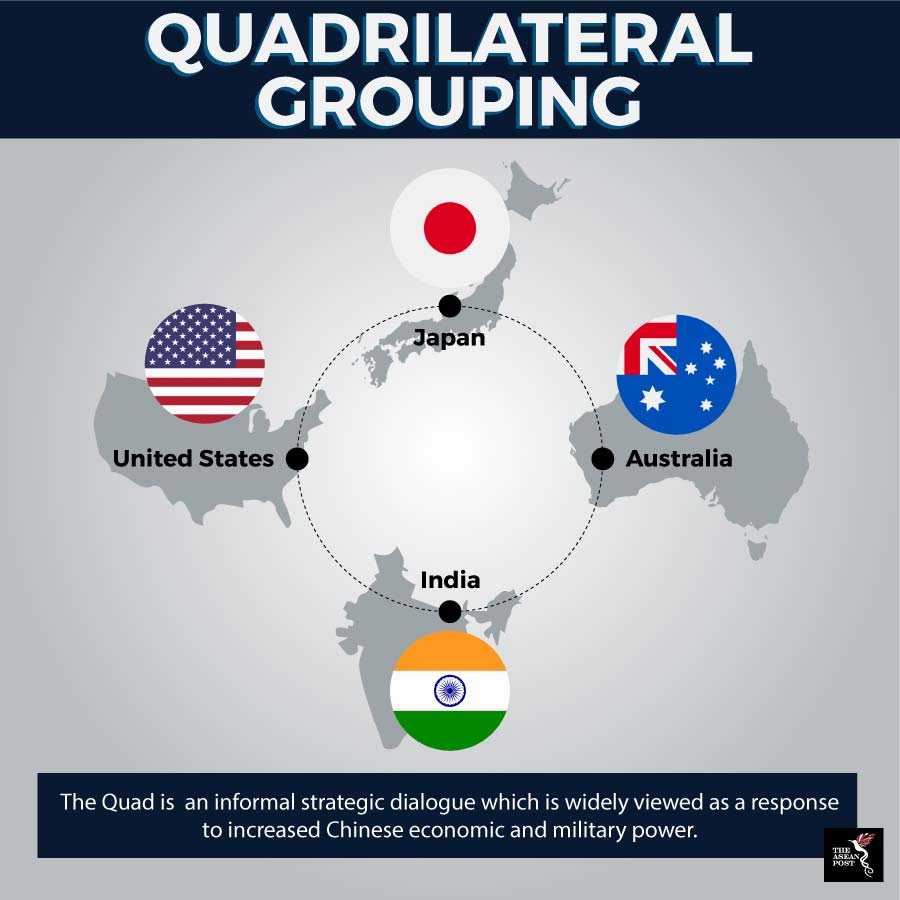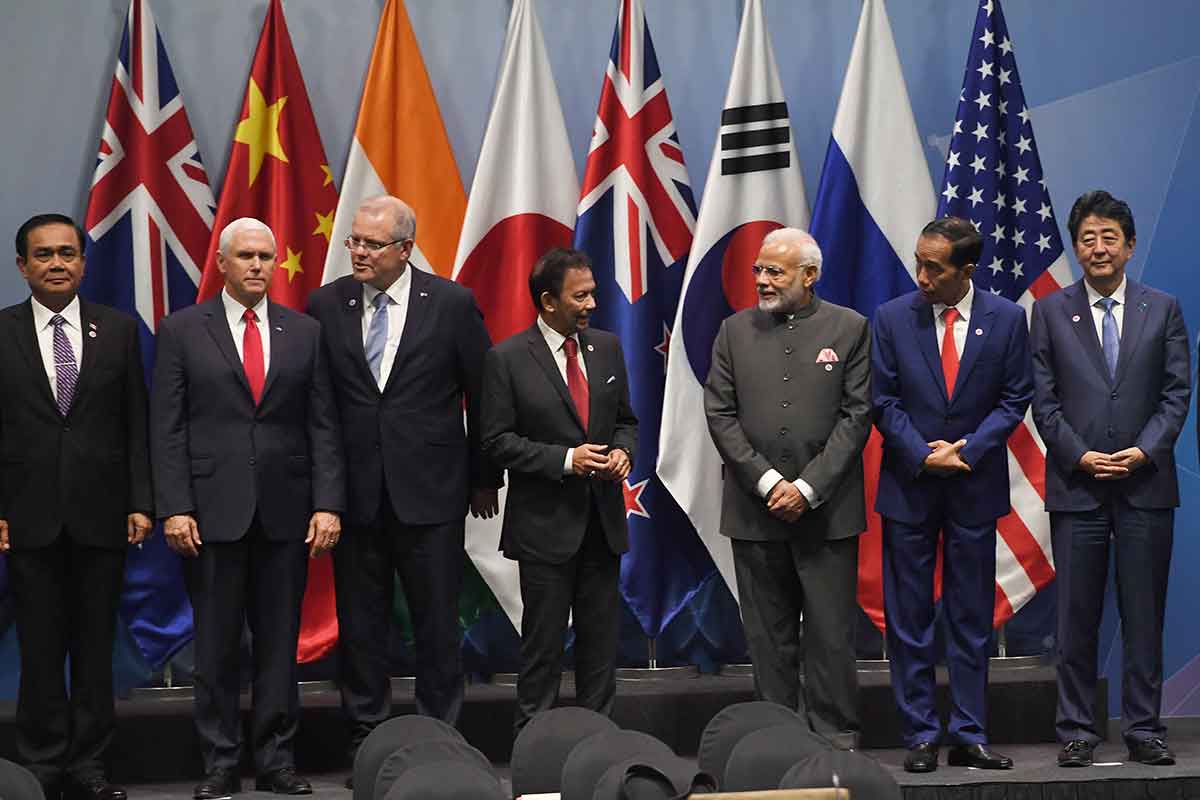Southeast Asia has been a significant venue for strategic competition between the United States (US) and China for a long time.
Given US President Donald Trump’s recent trend of policies towards the region, the US has seemed to adopt a more hands-off approach to the region. While this isn’t a complete reversal from his predecessor’s pivot, it looks as if under this administration, the US has taken a step back in the region, whilst still keeping a watchful eye on China.
To assist in this practice of diplomacy from afar, talks of the Quadrilateral Security Dialogue – or Quad – consisting of the US alongside Japan, India and Australia resurfaced in November 2017 after an almost 10-year hiatus.
Since then, the group has met thrice, most recently on the side-lines of the ASEAN Summit in Singapore last month to discuss regional security issues within an agreed upon framework of a “free and open Indo-Pacific.”
After the meeting, each country released a separate statement which focussed on the values of multilateral cooperation and a rules-based order – seemingly largely aimed at countervailing Chinese influence in the region.
Reconciling competing views
However, the failure of these nations to come up with a joint statement points to an inherent struggle to reconcile their competing views on how best to counter the rise of China.
India has long adopted a non-aligned approach as opposed to the stauncher, pro-US foreign policy stances of Japan and Australia. Afterall, it is very much within India’s as well as China’s interests to remain cordial with one another amid global economic uncertainties.
Both nations have espoused grand plans to improve their economies and add to their regional clout – China with its ambitious Belt and Road Initiative (BRI) and India with its manufacturing drive, the Make In India agenda.

Source: Various
China has every reason to be mindful of efforts to contain its rise in the region although the US denies that the Quad is specifically designed with this is mind. Beijing didn’t officially respond directly to the Quad’s meeting last November, but will likely keep a close eye on developments as they unfold in the months and possibly years to come.
Despite Trump’s apparent obsession with undoing his predecessor’s policies, it has become increasingly clear that his attitude towards this region hasn’t changed much compared to that of the Obama administration. Trump still wants to engage with the region and the Quad is one way of meeting that end.
For the quartet to remain relevant, future meetings must display signs of cohesion between the four partners. According to a commentary published by Singapore’s S. Rajaratnam School of International Studies (RSIS), the grouping must move beyond mere statement and reaffirmation of principles.
The authors of the report, Associate Research Fellow, Tan Ming Hui and Research Analyst, Nazia Hussain concluded that the grouping must delineate its goals and objectives so as not to come off as a squarely “anti-China” buttress.
“While it need not be institutionalised, it should work towards a roadmap with actionable items and show tangible results, such as by stepping up coordination in counter-terrorism, cyber security, and disaster relief,” the authors concluded.
The clash of interests between China and the US in this region will undoubtedly affect the Association of Southeast Asian Nations (ASEAN) and its centrality within the geopolitical chess game. One of ASEAN’s fundamental roles as a regional organisation is to be a manager of bigger powers, so that the region doesn’t become a theatre of competition for the world’s major powers.
Foreign policy can no longer be viewed as a zero-sum game – especially for smaller states like those within the ASEAN bloc. There is no shame in polygamy within the rubrics of international relations, but in balancing the interests of a state against prevailing great power rivalry, it can sometimes be difficult to not fall within the sphere of influence of any one power.
However, as the Quad struggles to clear the air of uncertainty surrounding its objectives and aims, ASEAN’s ability to play “manager” will be paramount in ensuring sustained peace and stability in the region.
Related articles:
What does the Indo Pacific era hold in store for ASEAN?
